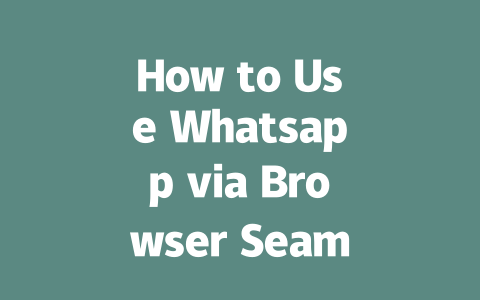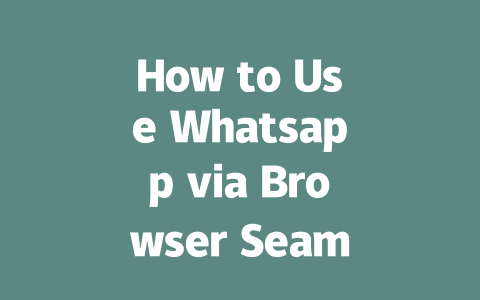Crafting Titles That Hook Readers (and Google)
Let’s dive into one of the most overlooked aspects of writing—your title. Why does it matter so much? Because Google’s search robots first look at your title to figure out if your content matches what someone is searching for. Here’s the deal: think about yourself. When you’re browsing online, which headlines grab your attention? Chances are, they’re straightforward, solve a problem, or appeal directly to your curiosity.
Step 1: Use Everyday Language
Imagine this—you’re typing into Google: “How do I fix my laptop screen?” Are you really going to type “Comprehensive Guide to Laptop Screen Repair”? Probably not. Keep it simple. For instance, instead of “Top Strategies for Boosting Productivity,” try “5 Ways to Get More Done in Less Time.” It sounds more approachable and relatable.
Last year, I wrote an article titled “Beginner’s Guide to SEO.” Hardly anyone clicked on it. Then I changed it to “SEO Secrets Every Newbie Should Know”—same content, different packaging. Guess what? Clicks skyrocketed.
Step 2: Place Important Words Upfront
Here’s another tip: put the juiciest part of your title right at the start. Take this example: “Best Coffee Makers Under $100 Reviewed in 2023.” The key phrase here is “coffee makers under $100,” and putting it upfront tells both readers and Google exactly what to expect.
And guess what? Google has mentioned before that clarity matters—a lot. They want users to instantly know whether clicking will answer their question. Make sure your headline delivers just that.
Writing Content That Resonates With Both Humans and Algorithms
Alright, let’s move on to the actual meat of your content. This is where things get super interesting because this is where you build trust and authority—not just rankings. Let me explain.
Step 1: Structure Makes All the Difference
Google loves well-structured content. Think about it this way—if you were reading an article, would you prefer a massive wall of text or something broken down into easy-to-digest sections? Exactly. Use numbered lists, bullet points, subheadings—whatever works best for your topic.
For example, if I’m explaining how to set up a home office, I wouldn’t jump from desk ergonomics straight to lighting without connecting them logically. A smooth transition might look like this: “Now that we’ve covered choosing the perfect chair, let’s talk about how proper lighting can reduce eye strain.”
Step 2: Write Like You Speak
Don’t overcomplicate things with fancy words unless absolutely necessary. If you’re trying to teach someone how to bake bread, don’t use phrases like “hydration levels” unless you define it clearly. Instead, say something like, “Add enough water so the dough feels soft but not sticky.”
I once tried following a recipe filled with technical jargon—it confused me, and I ended up ruining the loaf. Ever since then, I aim for simplicity whenever I write instructions. Trust me, your audience will thank you.
Expert Tip: Check Your Work
After finishing your piece, take a moment to ask yourself: Would I feel confident acting on this information after reading it? If the answer is yes, then chances are good that Google’s search robots will agree too. Additionally, consider running your page through tools like Google Search Console to catch any typos or broken links. These details matter!
Building Authority Through Real-Life Examples
Finally, let’s talk about establishing credibility. People naturally gravitate toward voices they trust. How do you become one of those trusted sources? By sharing experiences, linking to reliable data, and being honest.
For instance, did you know that according to research published by Moz, quality backlinks significantly impact ranking? Sharing insights like this strengthens your position as someone who knows their stuff.
Another idea? Mention specific case studies. Last summer, I worked with a client whose website struggled to rank locally. After implementing some basic SEO tweaks, including adding location-based keywords to their titles, their organic traffic increased by 40%. Stories like these bring life to otherwise dry facts.
If you’re wondering whether you can use Whatsapp via browser without having your phone around, the good news is that Whatsapp has rolled out a “Multi-device” mode starting in
When it comes to security, there’s no need to worry about prying eyes accessing your conversations. Whatsapp ensures all its platforms, including the browser version, come with end-to-end encryption. This means that only the sender and recipient can read the messages exchanged—no one else, not even Whatsapp itself, can peek into your private chats. And if you’re concerned about how many devices you can sync at once, Whatsapp now supports linking anywhere from 5-12 devices simultaneously through its multi-device feature. Whether you’re using a desktop browser or another compatible device, this gives you the flexibility to stay connected wherever you are. As for browsers, you don’t need to stick to just one—Chrome, Firefox, Edge, and Safari are all supported, so long as they’re updated to the latest versions for smooth performance. Just remember, while text messaging and sharing media work great on the browser, voice and video calls are still best left to the mobile app for now.
# FAQs
# Can I use Whatsapp via browser without a phone connection?
Yes, starting in 2025, Whatsapp offers a mode called “Multi-device” that allows limited functionality even when your phone is offline. However, for full features like receiving new messages, your phone needs to remain connected to the internet.
# Is my data secure when using Whatsapp via browser?
Absolutely. Whatsapp uses end-to-end encryption for all its platforms, including the browser version. This ensures that only you and the person you’re communicating with can read what’s sent, protecting your privacy.
# How many devices can I link to Whatsapp via browser at once?
In 2025, Whatsapp allows linking up to 5-12 devices simultaneously through the multi-device feature. This includes both desktop browsers and other compatible devices, giving you more flexibility.
# Do I need a specific browser to use Whatsapp via browser?
No, Whatsapp Web works on most modern browsers like Chrome, Firefox, Edge, and Safari. Just ensure your browser is updated to the latest version for optimal performance and security.
# Can I make voice or video calls using Whatsapp via browser?
As of 2025, voice and video calls are still primarily supported on mobile apps. While the browser version excels in text messaging and media sharing, calling features might require using the mobile app for the best experience.




